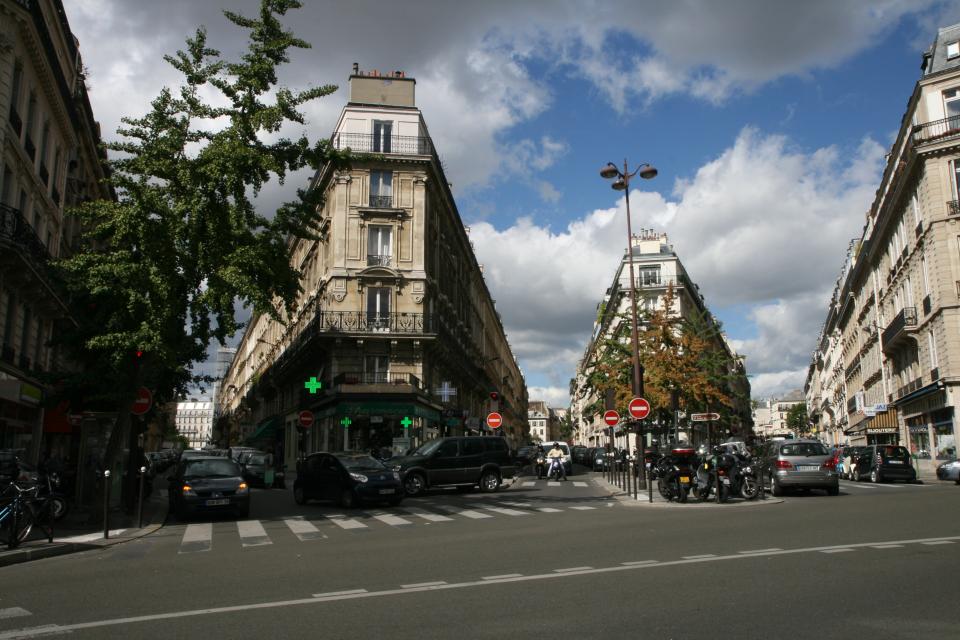About the Artist
Gustave Caillebotte
Born: Paris, 18 August 1848
Died: Gennevilliers, 21 February 1894
Nationality: French
Collection
The Art Institute of Chicago
Documentation
For Nancy Forgione Caillebotte’s Paris Street exemplifies a new kind of urban etiquette:
“My claim is that these pedestrians, rather than exhibiting the alienation imputed to Parisians reacting to the altered environment, behave in accordance with the newly updated codes of street etiquette. Their social conduct does not make legible their states of mind, but the muted atmosphere and the steady, pensive rhythms of walking seem to create an ongoing balance between interiority and outward attention….
The walkers in Paris Street: Rainy Day pursue their separate, inwardly experienced lives even as they participate in the city’s larger social network. The intervening space between oneself and other people has great social significance; sometimes one wishes to preserve that distance, and sometimes one wants to eliminate it. Indeed, the mood of Caillebotte’s painting suggests the tacit agreement of distance being maintained. The contingency of rain discourages pausing for the social or commercial distractions of the street and renders the walking more purposeful and the turn of mind more inward. The umbrellas help to preserve that distance, as they hold pedestrians farther apart than usual: the beholder, positioned as a potential insider, recognizes the impulse of the incoming man at the lower right to tilt his umbrella to the side in order to squeeze past the approaching couple.”
Nancy Forgione, “Everyday Life in Motion: The Art of Walking in Late-Nineteenth-Century Paris,” The Art Bulletin, vol. 87, no. 4 (December 2005): 675-6.
Michael Fried considers Caillebotte’s Paris Street from a psychological perspective:
“[I]n Paris Street: Rainy Day…I find a strongly absorptive painting in which the motif of carrying an umbrella to protect oneself from the rain becomes an ingenious device for thematizing a newly mobile mode of absorptive closure, one that also allows for the sharing or merging of individual lifeworlds, as in the three pairs of figures who perhaps should be seen as the painting’s true leitmotif: the two men at the extreme left, the two women walking into the distance immediately to the right of the lamppost, and most prominently the fashionable couple in the right foreground who share a single umbrella and look attentively to their right – their matched gazes a tour de force of apparent spontaneity – as if at a storefront, person, or other source of interest across the street.”
Michael Fried, “Caillebotte’s Impressionism,” Representations, no. 66 (Spring 1999): 27.
Technical examination of this painting indicates that Caillebotte relied on a pre-photographic instrument, the camera lucida, to achieve his precise, wide-angle view:
"The Art Institute's research team, with the help of Pablo Garcia...sought to investigate this theory about the camera lucida's centrality to the genesis of Paris Street; Rainy Day. In an experiment conducted in March 2015, Garcia attempted to re-create the aking of the initial sketch on the rue de Turin sidewalk with a nineteenth-century camera lucida from his own collection...[H]e revealed that the view captured by Caillebotte's [prepatory] sketch aligns almost perfectly with that visible in a camera lucida...Garcia was able to determine that the vantage point of the initial sketch was approximately fifty inches off the ground, roughly what would have resulted from an artist of Caillebotte's height using an optical device at chest level."
Gloria Groom and Kelly Keegan, "Paris Street; Rainy Day," Caillebotte Paintings and Drawings at the Art Institute of Chicago (Art Institute of Chicago, 2015), 6-7.
Similar Subjects by Other Artists
Léopold Boilly, The Downpour, 1803
